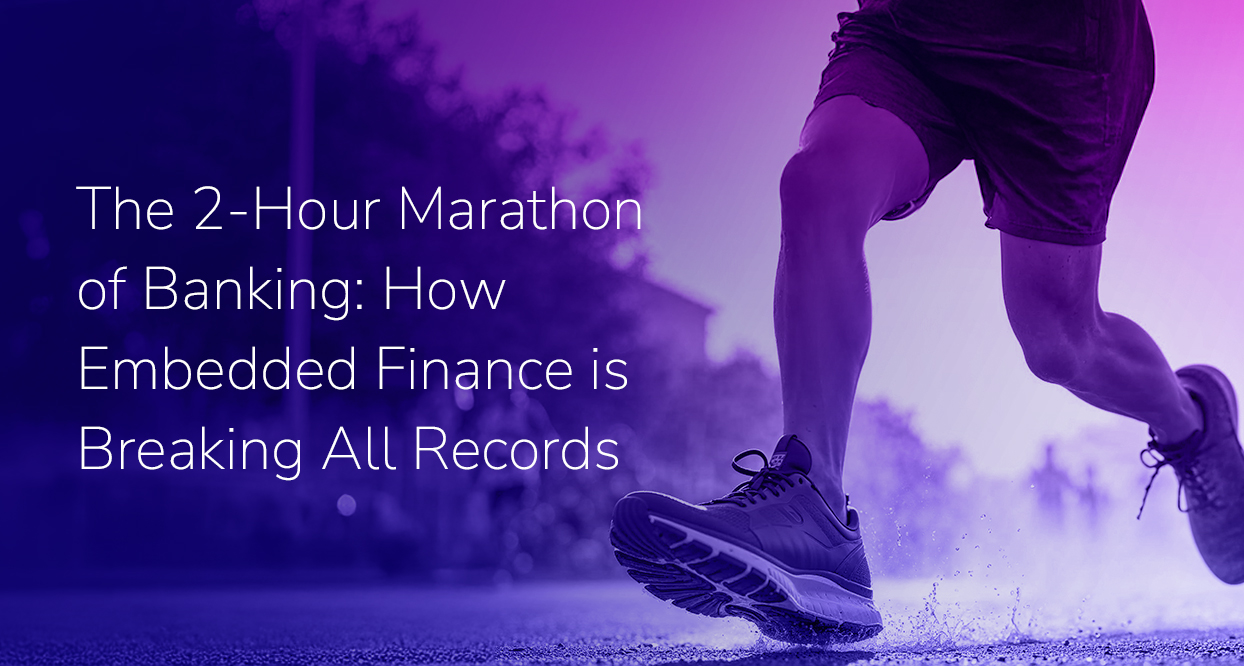The 2‑Hour Marathon of Banking: How Embedded Finance is Breaking All Records

In 2018, Eliud Kipchoge made history at the Berlin Marathon by finishing the 26.2-mile race in just over two hours, clocking in at 2:01:39. This remarkable achievement smashed the world record, which had previously been broken in small increments over decades. Kipchoge managed to lower the time by an impressive 1 minute and 18 seconds.
Not long after this feat, numerous other world records in endurance running began to fall. The catalyst for these dramatic improvements was Nike's introduction of a groundbreaking “super shoe.” This innovation, known as the Vaporfly, significantly enhanced running efficiency and was the result of Nike’s "Breaking2" project, an effort dedicated to creating an optimal marathon shoe to conquer the elusive two-hour mark. Much like the Vaporfly's impact on the running shoe market, embedded finance is transforming the delivery of financial services to consumers.
Embedded finance seamlessly integrates financial products and services into digital interfaces we use daily. These solutions meet consumers with a financial option exactly when it’s needed, whether it’s an easy way to pay, opening a checking account, applying for a loan, or signing up for an insurance plan. Any financial friction previously felt by consumers is lessened, as consumers can now easily move and manage money without having to log into online banking.
For financial institutions, the impact of adopting embedded finance has been exponential. Financial services embedded into e-commerce and other software platforms is expected to exceed $7 trillion by 2026 (about 10% of total U.S. financial transactions). While a threat to traditional banks, embedded finance poses a multitude of growth opportunities.
In Full Stride: Real-World Impact
There are countless use cases of embedded finance in the market today. Buy Now, Pay Later (BNPL) is one of the most well-known examples, allowing consumers to purchase goods and services and pay for them over time, often without interest if payments are made on time. Retailers typically integrate this service directly into the checkout process of their e-commerce platforms, making it a seamless part of the shopping experience and an easily accessible option for consumers.
Another example is a high-yield savings account in the Apple Wallet app that Apple launched in April 2023. In the first four months of its release, the account reached more than $10 billion in deposits. To put that in perspective—according to the FDIC, only about 150 out of more than 4,500 U.S. banks had deposits that exceeded $10 billion in the third quarter of 2023.
Getting the Right Fit
Historically, banks have controlled the products they offer and the way they reach customers. Given embedded finance’s revolutionary impact on the industry, banks need to become more agile organizations to match the speed of innovation seen in fintech and platform players and quickly adapt to changing market conditions and consumer preferences. This means that banks—built for security and reliability—will need to find new ways to be flexible and fast, including:
- Exploring new distribution channels and revenue models
- Fostering experimentation and continuous improvement
- Investing in new technologies and capabilities
- Rethinking the back office
- Creating and supporting a modern developer experience
Failure to adapt in this new landscape isn’t an option—the key to succeeding is embracing innovation, fostering cross-functional collaboration, forging strong partnerships, taking calculated risks, and focusing on the consumer.
Leaving the Starting Blocks
Whether you are formulating your embedded finance action plans, evolving them, or just seeking to better understand what all the hype is about, our latest eBook, “Keeping Pace with Embedded Finance,” draws parallels from Nike’s disruption of the running shoe market to help traditional financial institutions navigate this brave new world.